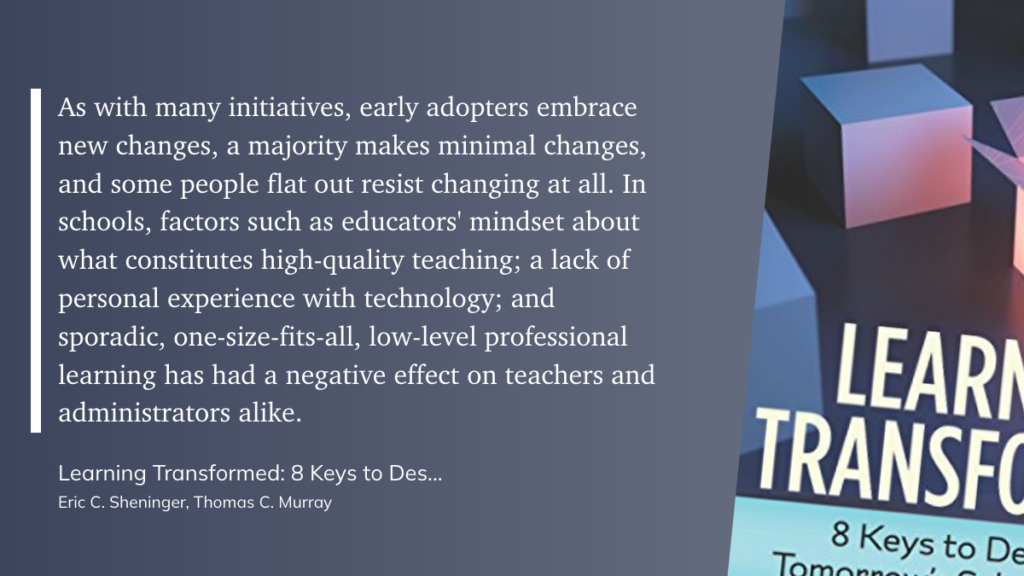This post was first published in August 2014, so please forgive any outdated references. I began my student teaching and carried many dreams and plans in my mind. Looking back on these words, I still carry many of these ideas with me eight years later. Maybe I was on to something…
I’m a huge movie fan. Many of my favorite films are science fiction, which, if you know me, is probably a foregone conclusion.
I love Star Wars, Star Trek, The Last Starfighter, Dune… the list goes on for days.
One of my favorite sci-fi films is Contact, based on the book by Carl Sagan. If you’re unfamiliar with the book or film, the plot revolves around what might happen if the human race received a message from another world.
Spoiler alerts ahead if you haven’t seen this nearly 20-year-old movie yet…
In the film’s climax, the main character speaks with a member of an alien race in the guise of her dead father. He explains a bit about how they were able to contact our planet and how things will progress in the future.
Our fearless heroine wants all of her questions answered at once, excited at what this incredible discovery could mean for science and the human race. However, she doesn’t get her wish.
The alien explains to her that progress and communication will come slowly over time. He tells her…
“Small moves, Ellie. Small moves.”
Change is a good but incredibly difficult thing. Especially in education. No matter how great we think some new technology or process is or how much we will benefit from it, the implementation will not come quickly. Not will it come free of pain, problems, and complaints.

Small moves.
Writing this post, I’m in my second full week of student teaching. Of course, I bring with me a fairly large amount of tech experience with a boatload of tools that teachers can use in the classroom. I am not, however, an experienced classroom teacher.
But, I can still show other teachers a few small ways that technology can make their lives easier, engage students, and bring some 21st-century methods into their classrooms.
But it has to start small. A friend of mine introduced Plickers in his classroom as a way to perform formative assessments. He called me over to see the trial run.
Of course, the students loved it. It was cool to see this app grade their responses instantly rather than waiting for their answers to be graded. I knew the kids would love it, and I knew my friend would love it, as we’ve been talking about using it since long before school began.
What I didn’t know would happen was the response from other teachers around his classroom. The buzz in the hallways after school about this little app was astounding. One of the guys from the district IT department even came over to see what we were doing.
Small moves.
Sometimes as tech evangelists, we forget that not everyone is as comfortable with tech as we are. There are teachers in your building right now that have been teaching long enough that they can remember a time when the only computers in the school were in a computer lab, and no teacher had a school email address.
And now we’re asking them to implement tools like GAFE, Microsoft LYNC, iPads, laptops, Chromebooks, and tablets….
Small moves.
If we really want to be great digital leaders, we have to be willing to meet others where they are with tech. Too often, we get carried away with the latest and greatest shiny app that will “revolutionize” our classrooms. We don’t understand why EVERYONE doesn’t use it the day it becomes available.
It’s not about beating other teachers and administrators over the head with new technology. It’s about showing them how one tool can improve or help them. How one tool can ignite a student’s interest in a new way.
It’s about small moves, not giant leaps.
We must be ready to make those small moves quickly and guide others to do the same. When that happens, teachers, administrators, and students win.
Sure, there will always be those asking, “Well, why are you doing this? What’s your motivation? What do you want to get out of it?” They balk at every suggestion and idea made.
But if we’re making small moves, those people will soon be drowned out by the gathering crowd of people making their small moves toward a better system for us all.
And soon, that gathering crowd will no longer be the minority that wants change; they will be the overwhelming majority that drives change and sends our education system in a new and exciting direction.
But it all starts with small moves.
Small moves, Ellie.
As leaders, that’s what we have to do.
Thanks for taking a stroll down memory lane with me.
Thanks for reading. Get access to exclusive content and expert insights on technology, teaching, and leadership by subscribing to my newsletter. Stay up-to-date on the latest trends and join our community of professionals and educators worldwide.
Leave a Reply